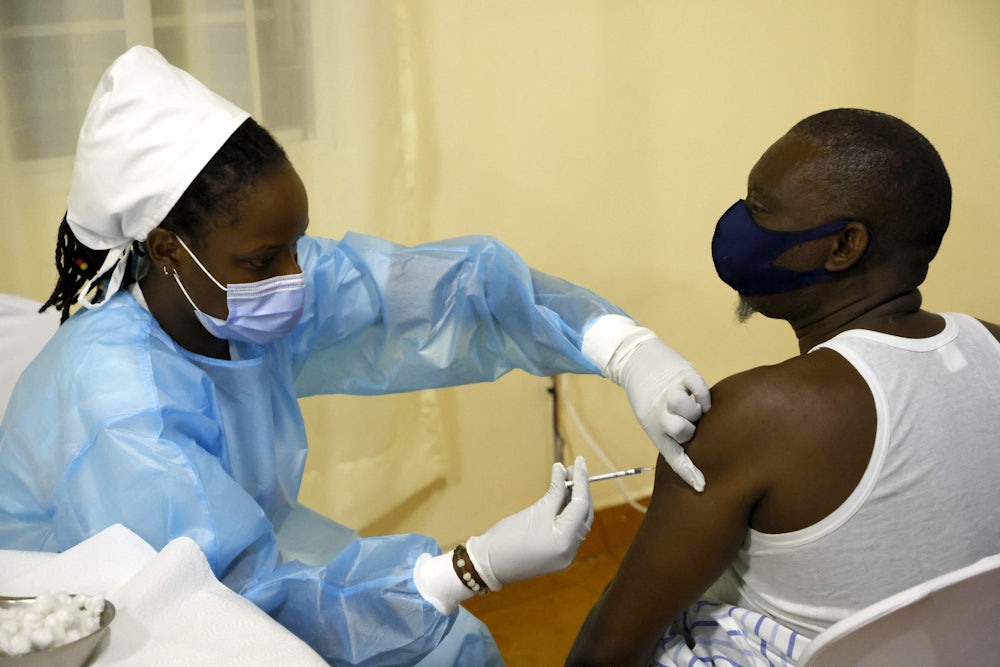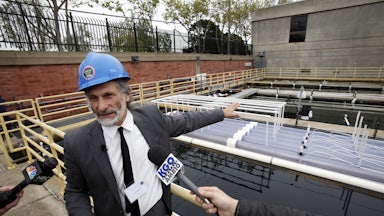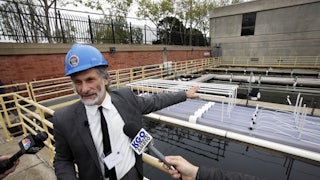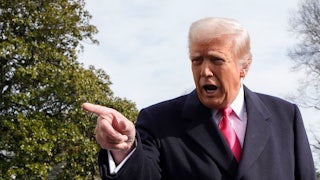A week after the G7 patted itself on the back for agreeing charitably to hand out 500 million doses of Covid-19 vaccines (“a drop in the ocean,” as Amnesty International put it), a very different group of leaders will convene virtually on Friday to hash out a more durable way to bring the pandemic to an end. As the climate crisis accelerates, the meeting may also preview an alternative to the G7’s underwhelming climate dithering in Cornwall last week.
Only 6.2 percent of the world has been fully vaccinated, with just 0.3 of shots having gone to low-income countries. Eight-five percent have gone to upper-middle- and high-income countries like the United States, which has 13.1 percent of the world’s vaccines and just 4.3 percent of its population.
The Summit for Vaccine Internationalism, convened by the Progressive International, brings together government ministers from Argentina, Bolivia, Mexico, Cuba, and Venezuela, and representatives of regional governments in Kenya and India, from the state of Kerala, alongside opposition leaders, health care unions, academics, and public health advocates. Four vaccine manufacturers will also be present: BioFarmaCuba; the Brazilian state manufacturer Fiocruz; Virchow Laboratories, an Indian manufacturer with a presence in over 100 countries; and Canadian firm Biolyse, which is seeking compulsory licensing agreements from its government to produce Johnson & Johnson vaccines. After a kick-off Friday, attendees—weighted toward the low- and middle-income countries still struggling to vaccinate their populations—will meet privately over the weekend to discuss new vaccine development and technology pools, sharing manufacturing capacity, as well as the potential to override intellectual property protections—what Bolivian foreign minister and summit participant Rogelio Mayta Mayta has called “collective disobedience.”
“We have the capacity to end this pandemic, producing and distributing Covid-19 vaccines for all. And yet the end is nowhere in sight. A nexus of Big Pharma and Global North governments is standing in the way,” summit coordinator and Progressive International cabinet member Varsha Gandikota-Nellutla said in an emailed press statement. “As long as the virus spreads, it can mutate and move. Ending the pandemic is not a question of charity. It is a question of survival. The longer we wait, the more we are at risk: billions of lives, North and South, vaccinated and unvaccinated.”
The international vaccine rollout has been a disaster. Early on, the Covax facility—a project of the public-private Gavi, the Vaccine Alliance—pledged to provide two billion doses to the developing world in 2021. So far, it’s delivered just 83 million. “That is a failure by any standard of logic or sense or mathematics,” Bangalore-based writer, campaigner, and summit attendee Achal Prabhala told me by phone. Early on, he explained, Covax opted to centralize production of the doses it planned to distribute at the Serum Institute in India. Amid a devastating outbreak in that country, exports stopped in March and, with them, hopes to speedily vaccinate the developing world. “Covax was devastated by this because of their own poor planning,” Prabhala said—but its problems run much deeper.
Like its parent organization, Gavi has largely depended on the “largesse of pharmaceutical companies,” Prabhala said: “It truly believed, in the pandemic, that all you needed to do is talk to pharmaceutical companies.” It offered to buy jabs from Western manufacturers, including AstraZeneca and Novavax, before they had been approved, making it a good deal for those companies.
A related wrinkle is that Covax will only distribute vaccines approved in the West, or by the World Health Organization. Since that has, until recently, only included U.S. or U.K.-made vaccines, it largely ignored those produced elsewhere, like China’s Sinovac and CoronaVac. Now that Sinovac and Sinopharm, another Chinese vaccine, have gotten WHO approval, Covax will likely depend on them to help meet its already dangerously modest targets and pick up the slack left by more sparsely produced Pfizer and AstraZeneca vaccines. Though they’ve been approved, Covax has not delivered any Moderna or Johnson & Johnson doses.
The continuing crisis of international vaccine rollout is disturbing not just in its own right but for how it suggests the climate crisis will be handled. There are plenty of overlaps between the two challenges: The countries being worst hit by Covid-19 also tend to be worst hit by climate-fueled storms, droughts, and heatwaves. The violently unequal rollout brings other lessons, too. The White House has also been keen to frame climate action as a profitable opportunity for U.S. companies to hoard valuable green intellectual property and outcompete the administration’s geopolitical rivals. As Biden told a joint session of Congress, “We have to develop and dominate the products and technologies of the future: advanced batteries, biotechnology, computer chips, clean energy,” in order for the U.S. to “win the twenty-first century.” Making those critical technologies subject to the kind of retrograde intellectual property protections now constraining vaccines will allow corporations to charge exorbitant rents for the right to decarbonize. That not only poses barriers to deploying clean energy but could make cheap new coal plants—likely to keep running for decades—a more attractive option for countries where millions still lack electricity. No country will “win the twenty-first century” so long as investors and executives can choke off paths to low-carbon development.
When it comes to climate finance, public-private charity models in the vein of Covax are already failing. In 2009, wealthy governments pledged to deliver $100 billion for mitigation and adaptation funding to the developing world, in large part by “mobilizing” private capital. That hasn’t materialized, and much of the financing so far has come in the form of loans that add to many poorer countries’ already crushing debt burdens. There’s not much reason to think that U.S. clean energy manufacturers—which, like its biotech companies, have received generous public funding—will be any more forthcoming with carbon capture or battery production than Pfizer and Moderna have been with vaccines.
Whether on clean energy or jabs, ditching patent protections is only a first step. Under intense pressure, the Biden administration finally did support waiving Covid-19-related IP at the World Trade Organization in May. What that didn’t come with was a commitment to compel pharmaceutical companies to share know-how for how to produce those vaccines with the rest of the world, despite the government having funded the basic research that created them. “There are genuine physical limits on what Pfzier and Moderna can make,” Prabhala says. “We’ve seen what they have, and it’s been barely enough for the richest countries. It’s a stretch to imagine that when they can’t satisfy the highest-paying countries, they can carve out the space for everyone else. The only way is to open up the manufacturing of vaccines we know work.”
The summit represents an attempt for lower-income countries to cooperate in the vacuum left by richer countries’ inaction, with lessons for navigating the hotter, wetter, and potentially sicker decades to come. Several low- and middle-income country governments are now looking for the ability to produce vaccines domestically, rather than to have paltry numbers of them delivered as charity. Bilateral deals have already happened between some countries in the global south, outside the purview of either Covax or the U.S. Iran, for instance, has agreed to produce Cuban vaccines. At the summit, Venezuela—another country suffering under U.S. sanctions—is expected to announce it will produce Cuban doses domestically, as well. The state-owned Chinese firm Sinopharm has an agreement with the United Arab Emirates to produce up to 200 billion doses a month there, along with co-production deals elsewhere that involve furnishing raw materials and technical expertise. “They’re distributing the ability to make the vaccine, which is very different than how Western pharmaceutical manufacturers have been operating,” leading to harsh shortages, Prabhala says. “There’s a kind of ideological capture that says we can only can be saved by a drug that comes out of London or New York. That’s not really true.”
The results of the summit will be announced at a press conference on Monday. If it’s successful, it could help bring a speedier end to the pandemic. It might also create a new, more solidaristic model for sorting out the other crises the twenty-first century is already bringing our way.








